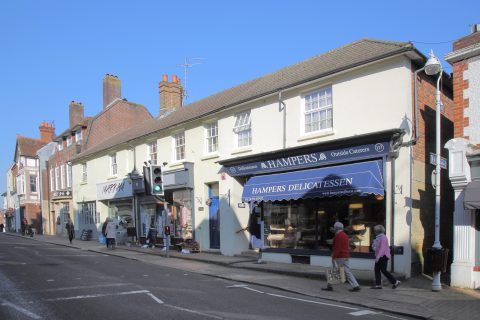The Hurstpierpoint and Sayers Common Parish Council enlisted Patrick Parsons to address the concerns regarding road safety and congestion on Hurstpierpoint High Street. This historic village was not originally designed to accommodate cars, resulting in narrow footways that pose discomfort and safety risks for pedestrians.
To tackle these issues, our team conducted a thorough feasibility study, which involved speed surveys and analysis of accident statistics. Based on the findings, we developed multiple options to address the problems. Public input played a crucial role in determining the preferred option through a consultation processes.
Subsequently, we were entrusted with the task of carrying out the detailed design for the chosen option. This involved negotiating the S278 Agreement, facilitating the tender process, and overseeing the execution of the project. The final design comprised various components, including the construction of a new footway, widening of existing footways, installation of new pedestrian crossing points, and implementation of traffic calming measures such as kerb buildouts and adjustments to priority/giveaway arrangements.
By taking a thoughtful approach, we transformed the High Street into a safer and more enjoyable space for pedestrians, whilst respecting its historical context and character.
Services provided:
- Feasibility study
- Traffic surveys
- Options design
- Public consultation
- Detailed design
- Negotiation with utilities to avoid diversions
- S278 submission and negotiation
- Tender package issue and analysis
- On site supervision
Challenges
Hurstpierpoint High Street has a rich history spanning hundreds of years, originally designed to accommodate horses and carriages rather than motor vehicles. However, it was experiencing significant motor traffic, which negatively impacted local shoppers and pedestrians. Our challenge was to develop solutions that would effectively manage traffic flow on the High Street, enhance the pedestrian experience, and preserve the village’s heritage.
In order to achieve these objectives, we carefully proposed measures to strike a balance between traffic management and creating a more pleasant environment for pedestrians. Our aim was to mitigate the adverse effects of motor traffic on local residents and shoppers. Additionally, we recognised the importance of preserving the historical and cultural significance of the village, ensuring that any interventions were sensitive to its history.
The success of any public realm project relies on the support of local residents and businesses. Therefore, it was crucial for us to gain an understanding of the local community’s concerns and priorities from the very beginning through correspondence and direct engagement. Armed with this knowledge, we proceeded to develop several options for consultation.
Due to the age of the High Street, we encountered various underground services beneath the footway and carriageway. Although we had access to surveys and utility records, their accuracy was not always reliable. This necessitated discussions and occasional adjustments to the positioning of signage and other elements to accommodate the specific circumstances of the local area.
Location: Hurstpierpoint Sussex
Client: Hurstpierpoint & Sayers Common Parish Council
Services: Traffic & Transport Planning


